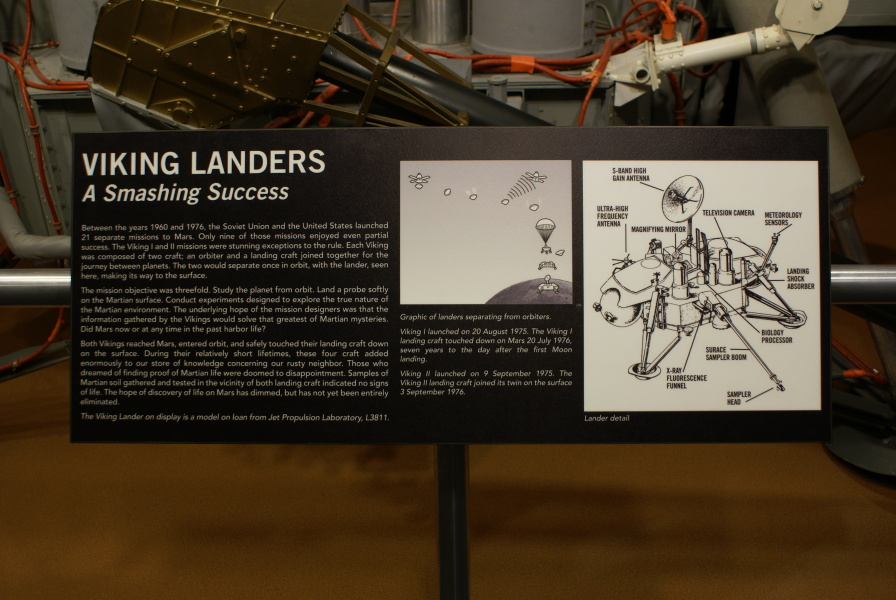| Prev |
heroicrelics.org Kansas Cosmosphere Site Index Viking Lander Gallery |
Next |
dsc99861.jpg
The sign accompanying the Viking lander model. It reads
Viking Landers
A Smashing Success
Between the years 1960 and 1976, the Soviet Union and the United States launched 21 separate missions to Mars. Only nine of those missions enjoyed even partial success. The Viking I and II missions were stunning exceptions to the rule. Each Viking was composed of two craft, an orbiter and a landing craft joined together for the journey between planets. The two would separate once in orbit, with the lander, seen here, making its way to the surface.The mission objective was threefold. Study the planet from orbit. Land a probe softly on the Martian surface. Conduct experiments designed to explore the true nature of the Martian environment. The underlying hope of the mission designers was that the information gathered by the Vikings would solve the greatest of Martian mysteries: Did Mars now or at any time in the past harbor life?
Both Vikings reached Mars, entered orbit, and safely touched their landing craft down on the surface. During their relatively short lifetimes, these four craft added enormously to our store of knowledge concerning our rusty neighbor. Those who dreamed of finding proof of Martian life were doomed to disappointment. Samples of Martian soil gathered and tested in the vicinity of both landing craft indicated no signs of life. The hope of discovery of life on Mars has dimmed, but has not yet been entirely eliminated.
The Viking Lander on display is a model on loan from the Jet Propulsion Laboratory, L3811.
Viking I launched on 20 August 1975. The Viking I landing craft touched down on Mars 20 July 1976, seven years to the day after the first Moon landing.
Viking II launched on 9 September 1975. The Viking II landing craft joined its twin on the surface 3 September 1976.

| Time picture taken | Fri Dec 6 17:11:30 2013 |
| Location picture taken |
Lobby Kansas Cosmosphere Hutchinson, KS |
| Prev |
heroicrelics.org Kansas Cosmosphere Site Index Viking Lander Gallery |
Next |